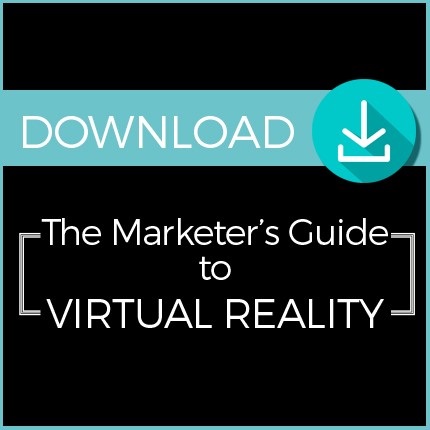 Virtual reality is the hot new video marketing tool disrupting business plans and budgets across the planet. Audiences are loving it and want more: a 2015 study found that 81% of consumers would tell their friends about their VR experience, and that 79% would seek out additional experiences. The demand is so huge Deloitte predicts that by 2020 the global market may be worth around $30 billion.
Virtual reality is the hot new video marketing tool disrupting business plans and budgets across the planet. Audiences are loving it and want more: a 2015 study found that 81% of consumers would tell their friends about their VR experience, and that 79% would seek out additional experiences. The demand is so huge Deloitte predicts that by 2020 the global market may be worth around $30 billion.
Because of this growing demand everyone is jumping on the bandwagon and offering VR production as part of their services. I get it – as an integrated marketing agency with an in-house video production department, becoming a virtual reality agency was a natural next step for us, so we sent the team on training, hired in specialists and acquired the kit we needed.
We’ve learned loads on our long VR journey; it truly is a different beast to 2D and takes some serious skills to tame. We’ve outlined 7 important differences to help you prepare for your own VR adventure – consider them carefully, they could save you buckets in tears and pennies.
1) You need specialist equipment
VR production requires some specialist equipment that can seem incredibly intimidating, not to mention expensive. At the very least you will need a 360 camera rig and editing station (with an i5 processor or above), as well as a PC and headset to review the footage.
In terms of camera gear, there is a range of options to suit different levels of budget and ambition. The Samsung Gear 360 is one great option at entry level that consists of two cameras with a 180-degree view. It’s priced at around US $460.
If only the best will do, consider the 8K, waterproof, six-camera GoPro Omni. It captures everything – and its resolution is almost faultless with minimal stretching. The price for this fancy rig is around US $4600.
If you want movement in your video, you need to budget for extra gear like drones and dollies.
Now that you’ve got your camera gear sorted you need to think about your editing equipment. At TopLine Comms, we recently bought a beast of an editing machine to deal with the sheer amount of high-res footage that each camera rig produces. This machine can process footage with resolutions ranging from 720p to 8K and is completely customized for VR production.
2) Avoid the danger zone
VR film sets have their very own ‘danger zone’ – usually a radius of 1.5 meters from the camera rig. Anything filmed in this zone will come out weird and blurry so your production team will need to keep it clear of any people or objects that could distort the shot.
Stitch lines can have a monstrous effect on your VR content so make sure you’re working with a crew who pays attention to where they are and keeps focal points as far away from them as possible.
But remember, even if the danger zone is kept clear, the different angles of footage will still have to be stitched together using specific software like Kolor Autopano Video Pro and Kolor Giga.
While some VR equipment – like the Samsung Gear 360 on the Galaxy s7 smartphone – have an automatic onboard stitching function, there are some drawbacks you have to bear in mind: the footage you get will have a lower resolution and the processing time will take longer.
If you want higher quality footage – Samsung Gear 360 can still do it, but then you have to use a computer and specialist stitching software. Ultimately, you need to decide what will work best for you and your budget.
3) Think about people on set
We know that when you commission your first VR project, you will probably want to be on-location. With normal video production, this is fine. With VR video production, it’s not fine. Remember, these cameras are filming 360-degree content which means everything will be in the shot. Even if you stand behind a tree and don’t breathe, you’ll get picked up.
This means that if you insist on being on set, the director will likely ask you to get in character, put on a costume and blend in. No joke. Crew on the latest Star Wars film, Rogue One, had to do it.
So if dressing up is your thing, by all means attend the shoot. If not, you can’t be on set. Sorry.
4) Give the voice over direction
Scripting voiceover for content that can literally go in any direction is tricky. Unlike 2D, your audience can look anywhere at any moment. So, if the VO is talking about something happening on the right, best the script directs them to look right. Rather than record the VO before filming, work with your production agency to do it afterwards.
You also have to keep in mind that most cameras focus on visuals at the expense of audio quality. To fix this you can hire special recorders for 360-degree sound, like Core Sound's TetraMic and Brahma Tetrahedron, for example. This will, of course, be an additional expense.
5) Be patient with the edit
Post-production is where the true magic happens but be prepared for it to take time – much more time than editing 2D footage. Merging stitch lines will take at least a week, more if your production has used multiple cameras.
The edit begins by uploading the footage into specialist software, like Kolor Autopano Video Pro and Kolor Giga. The content is sync’d and then the angles are stitched together.
Once the videos have been stitched together, your editing team will often have to fix the horizon. During the stitching process the software will automatically merge the different angles to reduce the appearance of seams. However, sometimes this results in an image that is off centre or off axis. This can only be corrected by manipulating the video.
What’s more, all objects directly above or below the camera (like tripods) will have to be ‘disappeared’ using skilful editing techniques such as superimposing a reference photo over it. Or, the editor can opt for the cruder method and stick a relevant graphic over it.
We once attached one of our 360 camera rigs to the front of a skateboard, but the clamp holding the camera up was visible in the footage. To edit this out we had to manually lay another image of a skateboard over the actual skateboard in the shot.
All of this makes VR editing a much lengthier process than traditional video editing.
6) Prepare to pay more
VR is relatively expensive to produce. It costs more than 2D but not as much as a Spielberg blockbuster (unless you’re referencing one of his epic films from the last century). Truth is, it doesn’t pay to cut corners – ultra-low-cost equipment and crews often result in ultra-low quality.
To put the costs in perspective it helps to look at the requirements in terms of time, people involved and post-production process. For a 2D filmed video you will usually need a producer or director, a camera operator and a sound recordist. Then the post-production process will involve and offline edit, motion graphics and colour grading. All of this will take about 5 weeks could cost between US$6 500 and US$10 000.
With a 360-degree video, however, you’ll need more crew members, including a producer or director, a camera operator, a digital imaging technician a sound recordist and a runner. As mentioned above the post-production process is also more extensive with VR. It will typically include stitching, offline editing, plating, motion graphics and colour grade. This pushes the project timescale to around 7 weeks with costs ranging from US$ 9 000 to US$13 000.
But remember, VR projects don’t all cost the same – productions with bigger kit, multiple days of filming and some basic graphics could be around US$13 000 to US$20 000. A high end VR experience with lots of animation could be upward of US$130 000.
With VR it’s worth investing in an agency that won’t mess up the postproduction process, and that will be able to advise you on the best shots for your video. You might think that it’s a good idea to have a camera on the floor while people zip past on bikes. While this sounds dynamic in theory, the shot’s perspective will place your viewer on the floor too – which might not be the most comfortable experience. A good VR video agency will point these things out to you, so you can make better, more informed decisions.
That said, your VR project also should not eat your entire marketing budget – what good is cool new content if you can’t afford to take it to market?
7) Make it audience friendly
Almost everyone wants to watch VR content but not everyone has the required headsets. If you’re producing an experience to showcase at an event or in the office then no problem, you’ll have the relevant equipment on-hand.
If you’re assuming that your viewer has an Oculus Rift at home, your amazing VR experience will fall flat. The best you can do is make sure that your audiences can immerse themselves in your VR content through as many platforms as possible: from Google Cardboard to YouTube to Sulon Q.
When producing content that has to be viewed with a headset, give some thought to motion sickness and make sure your viewers won’t feel too nauseous (remember Nintendo’s first attempt at VR that had people literally throwing up?). Relatively static shots are best as they allow viewers to move their heads freely and enjoy their immersive experience without unpleasant side-effects.
If you’re still not sure if VR is right for you, consider what you want to use the video for. Will an engaging, immersive video experience get the job done better than a traditional video? If the answer is yes, then you should consider VR. However, you also have to keep your budget and project timeline into account. While VR videos create a great experience they do take longer and are more expensive to make.
If you analyze your prospective project according to the 7 characteristics of VR videos listed above, you should get a good idea of whether what you want to achieve can be done through VR and whether you have the budget to make it work. The great thing is, should you decide to attempt VR you don’t have to go at it alone. You don’t have to be a VR expert if you work with an agency that is able to advise you on everything from shooting location to sound effects.
If virtual insanity is getting you down and you need some expert guidance, download our Marketer’s Guide to Virtual Reality.

from HubSpot Marketing Blog http://blog.hubspot.com/marketing/virtual-reality-vs-traditional-video-differences-to-know
No comments:
Post a Comment